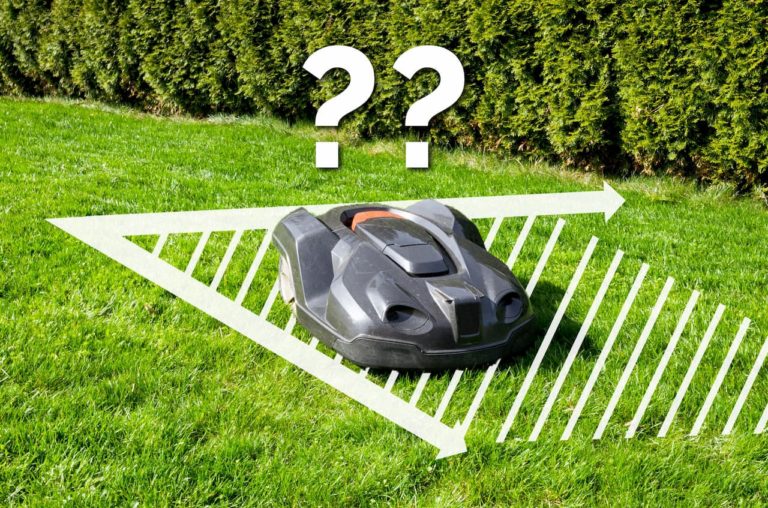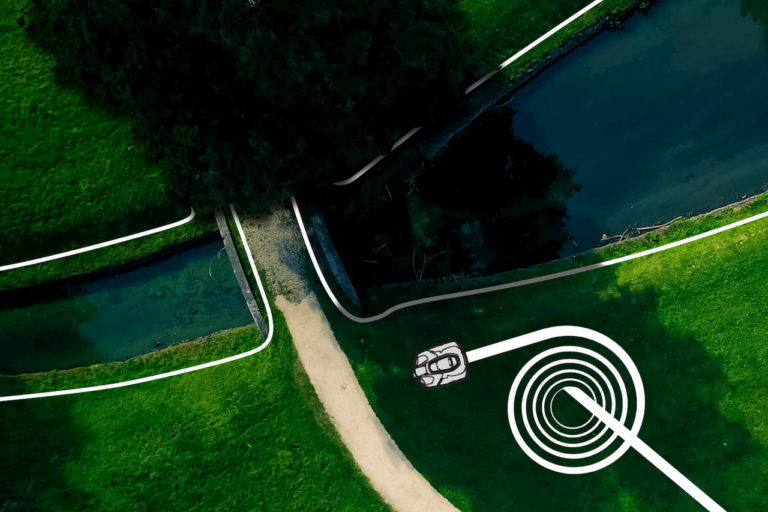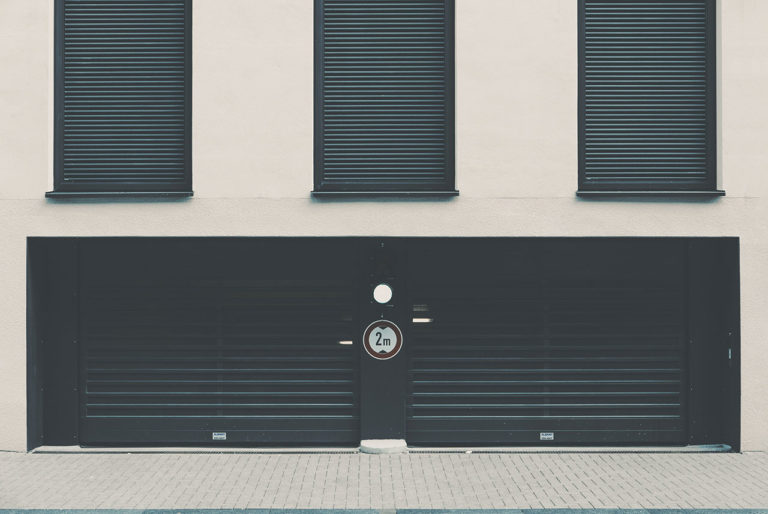If you are also someone who prefers to buy a high-quality, well-manufactured device that will last for a while instead of having to replace the device every two years, then you are probably also interested in the question of how long a robotic mower will last. Is it already broken after the usual two years, or does it last longer?
Some robotic lawn mowers can last for about 10 years or more, however it depends on the maintenance and the manufacturer. Especially robotic mowers from well-known brands such as Husqvarna can last a very long time with good care. Some first generation machines from 20 years ago are still running today. With cheaper machines, the service life can be much shorter.
Contents
Factors influencing the service life
There are a number of factors that determine how long a robotic mower will last. These include, for example, proper care and maintenance. Although lawn robots require little maintenance compared to normal lawnmowers – especially gasoline-powered lawnmowers – some maintenance is still required.
Improper handling can also shorten the service life, for example if the robotic mower is cleaned with a hose. In the worst case, this can lead to a defect, as water can penetrate the robotic mower and destroy the electronics.
Another factor is the weather conditions to which a robotic mower is exposed. Although many manufacturers advertise that their robotic mower does not mind rain, a shelter, or “robot garage” can extend the life of a robotic mower considerably. It protects the mower from wind and weather when it is at its charging station. The charging station also benefits from this protection.
The proper wintering of the robotic mower should also not be underestimated. If the robotic mower is exposed to cold temperatures, this can also shorten its service life or lead to a complete defect. It should therefore not be taken in for wintering too late in the season.
Last but not least, dangerous objects on the lawn can also cause the robotic mower to break down more quickly. If you do not remove stones, fallen fruit, toys and other objects from the lawn, this can damage the robotic mower as it drives over them.
Some parts of the robotic mower wear out faster and need to be replaced regularly. Depending on which mowing unit the lawn robot is equipped with, the blades must be replaced every three months, for example.
There are also differences with regard to the battery. In general, there are four different kinds of batteries used, which have a different durability depending on the type and care.
You should also make sure that you do not change the blades too seldom. If the blades are dull, they not only tear up the lawn, but also make the mower’s work more difficult, to the detriment of the engine and the battery. The following factors have a negative influence on the service life:
- severe heat
- extreme cold
- lack of or improper cleaning and care
- incorrect storage during wintering
- Objects on the lawn
- Changing the blades too rarely
How long does the battery last?
What factors influence the battery life?
The service life of the battery of robotic mowers is influenced positively or negatively by a number of factors. These naturally include how often the battery is used, i.e. how often it is charged and emptied. This is also called the charging cycle.
In general, it can be said that the lawn and the operating time during the day have a significant influence on the battery life. The closer the size of your own lawn is to the recommended maximum area of the robotic mower, the faster the battery will wear out.
It is therefore not at all wrong to generally buy a somewhat larger robotic mower than one that can just about manage the lawn, but with difficulty. In addition, the operating time can be reduced during dry spells, as the lawn grows more slowly during this time.
In addition, there are several other factors that influence the service life. For example, extreme heat or cold can significantly reduce the service life, or even render the battery unusable.
Overloading and complete emptying of the battery can also damage the robotic mower. How strongly these factors affect the battery also depends on the type of battery. In addition, the different types of batteries have different lifetimes even when treated well. But more about this later.
Factors that can have a negative effect on battery life
The lifetime of the battery depends very much on the handling and the type of the battery. We will first discuss general things you should be aware of and then point out the various differences between the batteries.
There are four things that a battery does not like: extreme heat, extreme cold, overcharging and complete power draining. Most batteries tolerate temperatures between 50° F and 95° F very well. You should therefore be careful not to expose the lawn robot to extreme temperatures.
Extreme heat
To avoid excessive heat, you should program the robotic mower so that it does not mow at midday in the Summer. You should also place the charging station in a shady place so that the robotic mower is not exposed to the blazing sun during charging and rest periods.
If you can’t find a suitable place that protects the robot from direct sunlight, a robotic mower garage can also help here. In this case, make sure that it is sufficiently ventilated and is not too small. You can find out which robotic mower garage is suitable for staying in the sun in our article about robotic mower garages.
Extreme cold
At the same time you should also take care not to expose the robotic mower to cold temperatures. Frost can cause the robotic mower to become defective. When the battery is exposed to frost, it can sustain corrosion damage, which can render it unusable.
In general, you should therefore only use the robotic mower until the temperatures begin regularly dipping down to 40 degrees or lower. After that you should store it in a warm and frost-free place. It is important to store the battery horizontally. Vertical storage can also significantly reduce the life of the battery.
Overload
Overcharging the battery can actually only occur if the charging process is not stopped as soon as the battery is full. But nowadays, modern devices have a function that stops the charging as soon as the battery is full.
However, the lifetime of a lithium-ion battery can be additionally extended if it is not always charged up to 100%. Since most robotic mowers – especially those with boundary wires – charge themselves automatically, it is of course impractical to intervene here. However, should you ever charge the robotic mower manually, for example before wintering, you only need to charge it up to a maximum of 90%.
Completely Emptying the Battery
A battery has a maximum voltage and a minimum voltage depending on whether it is fully charged or partially charged. For example, when fully charged, it can have a voltage of 4 volts. If it discharges to the minimum voltage, it has only 3 volts.
The lawn robot cannot detect the capacity of the battery, but it can detect how full or empty it is. It does this by means of the currently measured voltage, from which it can calculate the battery status.
If the battery reaches the minimum voltage, a system stops further discharge of the battery so that it does not become completely dead. The robotic mower can only recognize that a battery is present if there is still a minimum voltage on the battery.
However, if you do not use the robotic mower for a while, for example if you store it in winter, charge will continue to seep out of the battery over time, even without use. If the battery is completely discharged, it is then completely dead and possibly no longer usable.
In addition, it is also harmful to the battery if it is discharged very frequently until just before its minimum voltage. This can also reduce its capacity and at the same time its service life. For this reason, you should always leave the robotic mower docked to the charging station during normal operation when it is not mowing.
Differences between battery types
Lithium-ion battery
Four different battery types are used in robotic mowers. The most common is the “normal” lithium-ion battery, which is also found in almost all smartphones today. This quite modern battery charges especially fast. In general, it has a service life of 2 to a maximum of 5 years.
It is susceptible to extreme temperatures and overcharging, as well as becoming dead, but is less powerful than nickel metal hydride (NiMH) batteries. LI batteries usually have protection against full depletion, which minimizes the risk of a fully-dead battery. However, this protection cannot be guaranteed if the battery is not used for a long time.
- Self-discharge rate: 6 – 8 % per month
- Optimum temperature conditions: 50-95 °F
- Average service life: 4 years
- Charging cycles: 500 – 800 charging cycles
Lithium Iron Phosphate Battery
A special variant of the LI battery is the so-called lithium iron phosphate battery. This battery is more temperature resistant than normal LI batteries and discharges less quickly when not in use. This is associated with a somewhat higher price.
- Self-discharge rate: 2 – 4 % per month
- Optimum temperature conditions: 50-104 °F
- Average service life: 5 years
- Charging cycles: 1000 – 2000 charging cycles
Nickel-metal hydride batteries
Nickel metal hydride (NiMH) batteries can last between 5 and 7 years. They are much more susceptible to extreme temperatures than LI batteries. Overcharging and complete charge depletion also cause them severe problems. In addition, they have the so-called memory effect, which means that the battery only uses the charge cells that are charged the first time it is used and on a regular basis. If charged incorrectly, this can reduce the capacity.
However, an advantage of these batteries is that they have a large capacity and therefore need to be charged less frequently and thus wear out less quickly. When used correctly, they can have a long life.
- Self-discharge rate: 5 – 10 % or 1 – 2 % (NiMH variant with low self-discharge)
- Optimum temperature conditions: 40 – 104 °F
- average service life: 6 years
- Charging cycles: 350 – 500 charging cycles
Lead gel batteries
Due to their heavy weight, lead-gel batteries are rarely used in robotic mowers. Depending on the design, they can have a service life of 4 to, in rare cases, a maximum of 10 years. They can also become unusable through complete depletion.
- Self-discharge rate: 4 – 6 %
- Optimum temperature conditions: 50-104 °F
- Average service life: 6 years
- Charging cycles: 400 – 600 full cycles
How long do mower blades last?
The service life of the mowing blades is largely dependent on the type of mowing unit. A distinction is made between two different types of mowing units. The mowing cross and the blade disc.
The mowing cross is a star-shaped rotating blade, which is very similar to the mower deck of a classic lawnmower. Mowing crosses can generally last quite long, but they become blunt over time. Mowing crosses last for about one season, after which they should be replaced.
Blade discs, on the other hand, are rotating discs with small movable blades at their ends, which are flung outwards by the rotational force. The service life of these mowing blades depends on the condition of the ground, the type of grass and the size of the lawn. As a rule, they last for one to two months on ¼ acre.
Here, however, it also depends on your own lawn standards. If you have an “English lawn” with very short grass, you will have to change the blades more often. If the requirements are not so particular and you have a mixed lawn with longer grass, you do not need to change the blades as often.
Lawns in the city are usually less robust and do not wear out the blades as quickly. In the countryside, grass is usually a bit hardier and more stubborn, so the blades should be changed more often.
How can the service life be extended?
Avoidance of extreme heat and cold
As already mentioned, too much heat can damage the robotic mower and shorten its lifespan. The electronics can be damaged by too high of a temperature, and the life of the battery can also be significantly shortened.
In order to protect the robotic mower from strong sunlight, you should therefore not let it drive during the middle of the day in the Summer. During charging and resting times, you can protect it with a well-ventilated robotic mower garage, or place the charging station in a shady place.
In order not to expose the robotic mower to extreme cold, it is important not to winter the robotic mower too late. When temperatures in your area begin to move into the mid-40s, it should be moved to a dry and frost-free place.
Make sure that the battery is stored horizontally, otherwise it may become damaged.
The correct space utilization
Smaller robotic mowers also have smaller batteries. If the mowing area is too large, the robotic mower has to drive back to the charging station pretty often to recharge itself. As a result, the battery must be able to cope with a large number of charging cycles.
When choosing the right robotic mower, you should therefore leave some buffer as far as the area size is concerned and buy a slightly larger model. Do not forget that the indicated area is always the maximum area that the robotic mower can handle.
With this area output calculator you can figure out which area output your robotic mower should have in order to be able to manage the area.
For the different surface sizes I have also taken a thorough look at the available models and put together a collection of suitable models that I would recommend:
- Recommended Robotic Lawn Mowers for Small Yards 2021
- Recommended Robotic Lawn Mowers for Medium Yards 2021
- Recommended Robotic Lawn Mowers for Large Yards 2021
Sharpening the mower blades
Mower blades do not necessarily have to be bought new. It makes sense to sharpen them, as it saves money, but you shouldn’t sharpen your mower blades without knowing exactly what you’re doing. When sharpening the blades, it is generally important to choose the right angle.
Since this angle can vary from blade to blade, it is best to use the angle that the blade typically has after it has been sharpened. Japanese wet grinding stones are best suited for grinding.
Use a grit size of 500 at the beginning, then 1000, followed by 2000 and be sure to always keep the exact angle. This is best achieved with a clamping device. Note that these grit sizes refer to the JIS (Japanese Industrial Standards) system, which is most widely used for Japanese wet grinding stones.
Conclusion
With the right care, robotic mowers can last a very long time. Some first generation robotic mowers are still in use today. It is therefore worth the effort. The more expensive models from Husqvarna are also among the higher quality models, which are known for their durability and particularly long lifespans.




